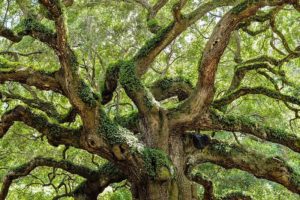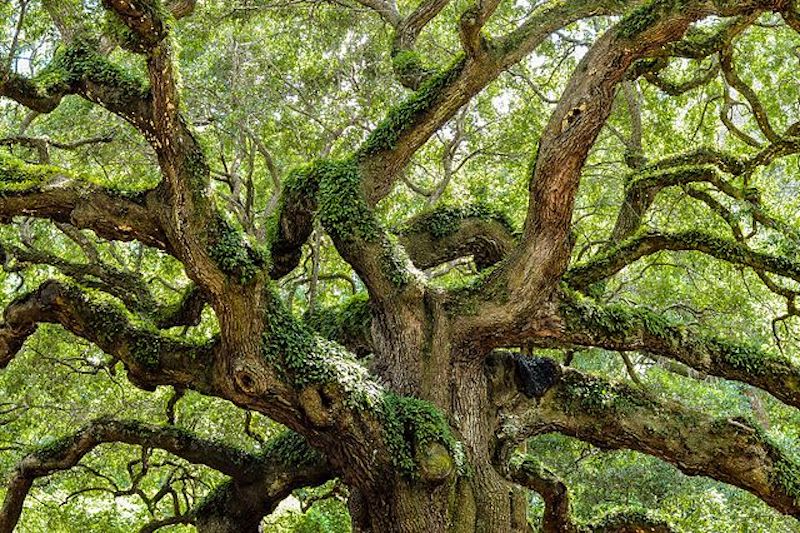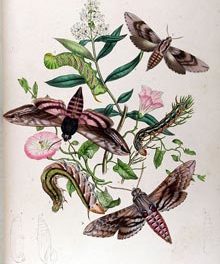 I’m curious. Why “Live Oak”? Aren’t all trees which aren’t dead, alive? Well, I found that all trees and shrubs fall into two categories: Evergreen or deciduous. Evergreen – the leaves don’t fall off. Deciduous – they all fall off every year. A Live Oak is classified as evergreen.
I’m curious. Why “Live Oak”? Aren’t all trees which aren’t dead, alive? Well, I found that all trees and shrubs fall into two categories: Evergreen or deciduous. Evergreen – the leaves don’t fall off. Deciduous – they all fall off every year. A Live Oak is classified as evergreen.
Huh? To me, they should be classified as deciduous. Heaven knows Live Oak trees lose bushels of leaves every year.
But here’s the straight skinny. Regular deciduous trees lose all their leaves and go dormant in the fall. They start in the autumn by turning color (though few of our Lowcountry trees give much color) and drop all of their leaves within a few weeks. By the time winter is really here, they are barren.
The leaves of Live Oaks also die, but not until late winter when they begin to turn yellow and in very early spring, the old leaves begin to be pushed off by the emerging new ones. By the time all the dead leaves are pushed off, the new ones have arrived, so it never actually becomes barren. Hence, Live Oak.
Unlike the leaves of most deciduous trees, these leaves are not thin and brittle. In fact, they seem to take forever to decompose. And what’s more, they clump together to make an almost impenetrable barrier over anything they cover. Water, light, oxygen and nutrients are prevented from reaching roots.
Raking or blowing them off of your lawn is de rigueur down here, and the ‘mow, blow and go’ people generally blow them into all your foundation shrubs and flower beds, where they build up and build up until the roots of shrubs and plants are covered knee deep in un-decomposed oak leaves.
Very bad. Any mulch resting against the base of trees and shrubs invites trouble so there should always be a mulch-free circle of at least 10 or 12 inches around them.
So what can you do with all those leaves? Well, you can ask the mow and blow people just to mow over the leaves and not blow them. Mulching mowers (which they mostly use) will cut the leaves into small pieces which will decompose quickly and add nutrients to your lawn. Don’t worry about the tannin in the leaves (there’s lots) because when cut into small pieces, the first good rain will leach out the tannins.
Or, you can rake the leaves and put them into those big black plastic contractor bags, throw in a handful of fertilizer and a good whish from your hose, and seal them tightly. Put them in an out-of-the-way spot and forget about them for a year. This is called aerobic composting. Just putting them in your compost pile would mean that all the other material would be composted long before the oak leaves.
One of the many good things about a Live Oak tree is that it is a fast grower, often growing over 2’ a year. That being said, don’t plant it too close to any structures since they don’t have tap roots and their roots can extend far beyond the canopy of the tree. Also, if it’s planted near an irrigated lawn or flower bed, the roots will migrate to the surface to get at the easy water and make your lawn impossible to mow and your flower beds will lose the battle for nutrients and water.
Live Oaks also have a tendency to grow very large, horizontal limbs near the ground. These can be 20 or 30 feet long, so if a tree planted near your house, you could find a limb growing through your bedroom window!
Spanish moss loves to live on the branches of Live Oaks. Nothing says the south more than moss-draped Live Oak trees. Spanish moss is an epiphyte – that is, it receives all its needs from the atmosphere alone. It relies on the trees only for a resting place. A healthy tree is unaffected by Spanish moss and the sunlight the tree needs will percolate through the moss. However, the moss does absorb moisture and unhealthy brittle tree limbs can break from the weight. By and large, though, Live Oaks can live for hundreds of years covered with Spanish moss. The Angel Oak in Charleston is thought to be over 400 years old.
Live Oak trees here in Beaufort County are protected. You must obtain permission to remove one.
Live Oaks serve as the backbone of the ecosystem they inhabit. They provide habitats for hundreds of plants and animals and their abundant acorns provide food for mammals, birds, and insects. Their branches support many types of epiphytes including mosses, ferns (think of that wonderful Resurrection fern), lichens, and bromeliads. And their leaves host moth and butterfly larvae.
If you love the contorted limbs of a Live Oak, but don’t have room for one, try planting it in a large container. Container grown trees act as large bonsai. Confining the roots limits the size of the tree. You would need to be mindful of the shape, and some pruning would likely be necessary. Root pruning every few years would be beneficial as well. Doug Tallamy, noted author and native plant guru says that an acorn planted the same day as a balled-and-burlapped tree will surpass that tree after 10 years growing side by side. Who knew?
If you’ve wondered why every few years, our streets, lawns and sidewalks are covered with acorns, and you crunch everywhere you walk, it’s because that year is a “mast year” for oaks. Those years, oak trees produce far more acorns than can eaten by wildlife so they will be sure that some are left on the ground to make new trees. Aren’t they clever?
Garden Tip: December is a good time to plant spring blooming bulbs. Bulbs planted earlier may emerge and be damaged by winter cold.









